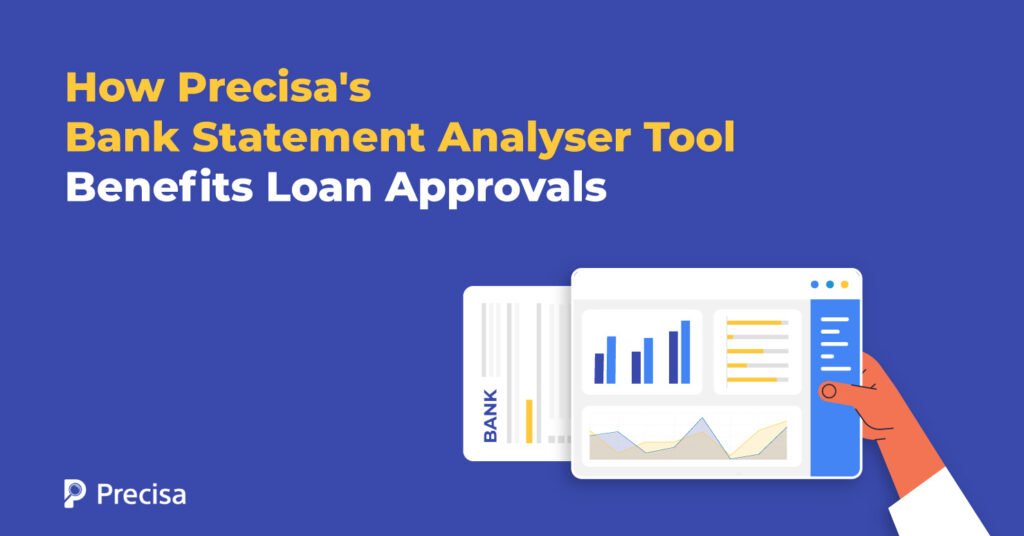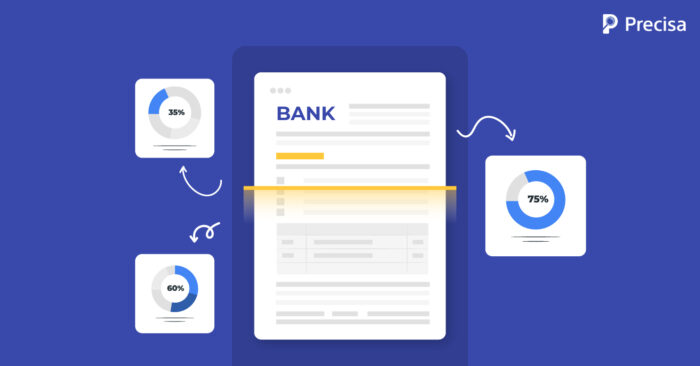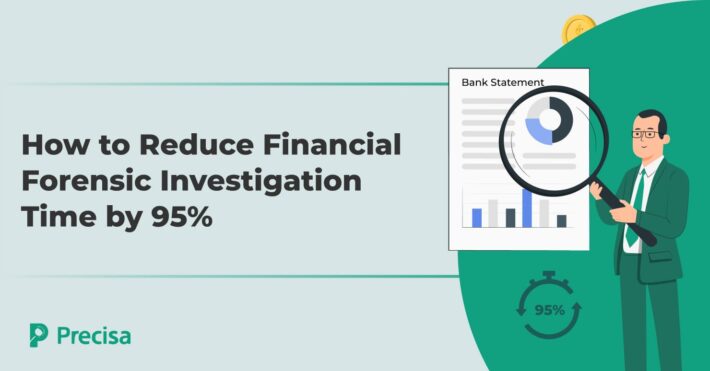How Precisa’s Bank Statement Analyser Tool Benefits Loan Approvals

India’s digital lending market is on the brink of a revolution, with projections indicating a surge from 1.8% of retail loans in FY22 to an impressive 5% by FY28. This rapid growth is fueled by the increasing demand for convenient, flexible, and swift loan approvals, particularly among younger generations. To capitalise on this trend and manage the associated risks, lenders are turning to advanced technologies like bank statement analysers.
These tools use AI, machine learning, and OCR to automatically analyse borrower finances, giving lenders a much clearer picture of creditworthiness. This allows for faster loan approvals, reduced risk, and, ultimately, better decisions.
In this article, we’ll explore eight ways Precisa’s bank statement analyser speeds up loan approvals.
What is a Bank Statement Analyser?
As noted above, a bank statement analyser is a software solution used by lenders to automate the financial analysis process and determine the creditworthiness of borrowers efficiently and accurately.
The entire spectrum of lenders—from banks to Non-Financial Banking Companies (NBFCs) —can use this solution to expedite the loan approval process.
Bank Statement Analysers: Recent Developments and Trends
- Account Aggregator Integration: Many analysers now integrate with India’s Account Aggregator framework, allowing for secure and consent-based access to financial data across multiple accounts.
- GST Data Integration: Some advanced systems can cross-reference bank statement data with GST records for more accurate financial assessments of businesses.
- Regulatory Compliance: With an increasing focus on data privacy, leading analyser tools are designed to adhere to RBI guidelines and data protection regulations
8 Ways a Bank Statement Analyser Benefits Loan Approvals

Here’s a look at how tech-enabled solutions, such as cloud-based financial data analytics solution Precisa’s bank statement analyser, help lenders remain compliant, manage risk, and drive growth:
1. In-depth Transaction Analysis
By using the bank statement analyser software, lenders can carefully evaluate every transaction on a borrower’s bank statements.
The software automatically segregates every transaction into an inflow or outflow category. The transaction is further segregated into various subcategories.
- Inflow categories include salary, revenues, tax refund, capital gains, and earned interest.
- Outflow categories contain employee salaries, vendor payments, income tax payments, EMIs, fees, and penalties.
Such meticulous segregation enables lenders to account for every transaction.
2. Accurate Risk Assessment
With a bank statement analyser, the entire risk assessment workflow is automated, making it more efficient and less prone to human error and omissions.
Automated extraction of data, for instance, ensures that no transaction is missed. Based on the analysis, lenders determine cash flows, past borrower behaviour, and potential risks.
For instance, lenders can accurately analyse a borrower’s cash balance, bank deposits, withdrawal history, and cash overdrafts.
The software also has capabilities to flag cases of bounced cheques and loan repayment defaults, via the related penalty transactions.
The analyser then runs a thorough examination using comprehensive data from multiple data sources. It generates detailed reports and a creditworthiness score, based on which lenders can make data-driven decisions.
3. Automated Compliance
As the threat of data hacks and misuse grows, regulatory bodies such as the Reserve Bank of India (RBI) are becoming more stringent in their regulatory framework.
Lenders that fail to comply run the risk of being slapped with heavy penalties and being investigated. In the event of non-compliance, they also risk the potential closure of business.
By using bank statement analyser software, lenders can ramp up their compliance strategies.
For instance, the software enables them to automate compliance checks and monitoring across all stages of the underwriting process.
This feature is especially beneficial as lenders scale their businesses.
4. AI-powered Fraud Detection
Bank statement analyser software harnesses the power of AI to detect unusual transaction patterns.
For example, it tracks the occurrence of circular transactions, which indicate fraudulent practices by business borrowers.
AI recognises subtle differences in text, numbers, and logos in documentation, which indicates that documents may be tampered with.
Lenders can also leverage bank statement analysers to flag potential cases of identity by cross-referencing all names, addresses, and other identity markers.
5. Enhanced Data Security
Lenders are the guardians of volumes of sensitive financial data. Ensuring the safety of this data is an important pillar for lenders, based on which they can build customer trust and loyalty.
A superior bank statement analyser relies on AI and machine learning to enhance data security protocols.
The software automates tracking of any unusual activity, runs checks, authenticates log-ins, and ensures that users are logged out securely.
6. Customised Solutions
Borrowers have a wide range of credit needs and profiles. They range from borrowers with a long credit history and multiple assets to first-time borrowers with no credit history and no assets.
Hence, standardised loan products do not authentically serve the needs of diverse borrowers. Customising loan products, however, consumes a considerable amount of resources.
To tackle this, a bank statement analyser automates the customisation of loan products based on the financial analysis results and creditworthiness scores of borrowers.
7. Predictive Data Analytics
Another key advantage of Precisa’s bank statement analyser tool is that it enables lenders to run predictive models as part of their calculation.
For instance, lenders can run an analysis by using non-financial data to forecast a borrower’s ability to repay loans based on external factors.
Examples of non-financial data include macroeconomic indicators and new regulatory guidelines.
Financial analysis can also be tailored to specific industries and expected market trends. Thus, lenders get to future-proof the analysis by incorporating additional data outside the scope of a borrower’s financial data.
8. Cross-analysis of Financial Data
The usage of a bank statement analyser also enables lenders to cross-reference a borrower’s financial data to check its authenticity.
For example, revenue data can be cross-referenced against alternative data, such as Goods and Service Tax (GST) returns.
The software directly pulls data from the GST portal with a borrower’s consent, adds it to the analysis matrix, and authenticates each revenue transaction.
The Takeaway
By adopting a superior bank statement analyser, lenders can leverage the best of technology to expedite loan approvals and drive revenues.
Presica’s user-friendly Bank Statement Analysis aims to simplify the analysis process through automation, which enables the results to be delivered in minutes. It also:
- Extracts, classifies, and categorises transaction data from uploaded bank statements.
- Supports over 450 banks and 1,000 formats.
- Has processed over 55 million transactions and 6.5 lakh (650,000) bank statements.
The software provides actionable insights on an easy-to-use dashboard, helping businesses make informed lending decisions.
Request a free demo today!



